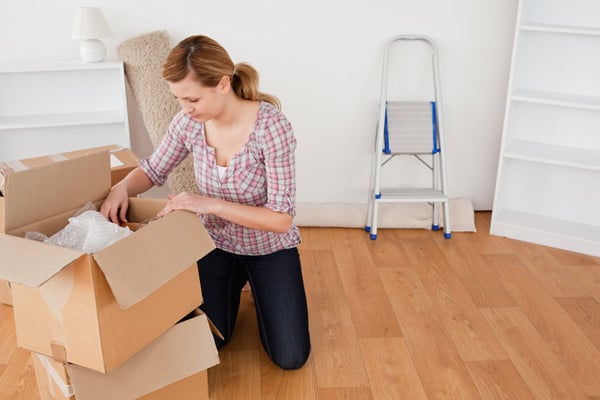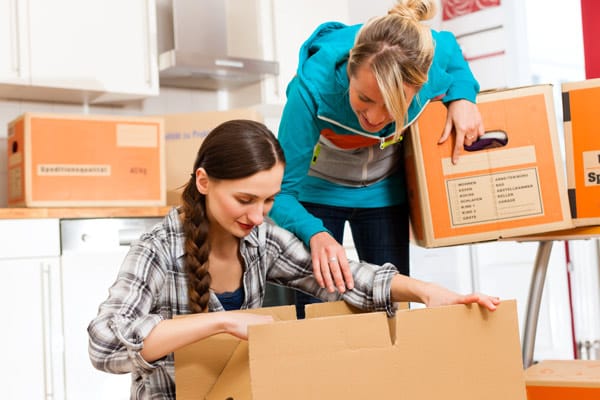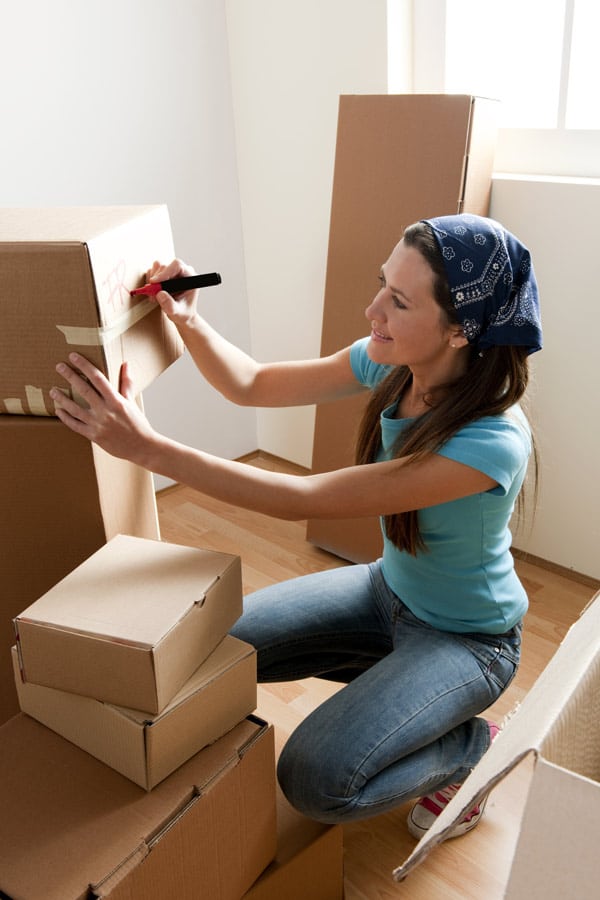One of the very first decisions you’ll have to make when you’re getting to move out is who’s going to pack up your things for the upcoming move – you or professional packers?
There are pros and cons to each scenario, of course, and that’s exactly why you should weigh your options carefully in order to make the best possible decision.
- To delay the start of the packing job
- To underestimate the task of packing
- To begin packing without a packing strategy
- To pack all your things without sorting them first
- To fail to prepare your packing supplies in advance
- To forget to pack essentials boxes
- To pack items you’re not allowed to pack and move
- To assume that labeling your boxes is a waste of time
Consider packing by yourself when 1) you can’t afford to pay for a professional packing service, 2) you have ample time until Moving day, 3) you have a pretty good idea about how to protect various household items for a move, and 4) you’re not moving any specialty items such as a piano or a grandfather clock.
You’ve already made up your mind that you’re going to pack up your things for moving without hiring packers, haven’t you? So far, so good. Now one thing you should be particularly careful about is avoiding any big mistakes when packing for a move.
A serious packing mistake can cause you to waste precious time or it can lead to an accident on the day of the move. A not-so-serious mistake can cause severe frustration or add extra stress to an already rather stressful house-moving experience.
Read on to learn the most common packing mistakes you should avoid when moving to a new home.
To delay the start of the packing job
Don’t make the huge mistake of delaying the start of packing. This is especially important when you know you will rely entirely or mostly on yourself.
The thing to remember is that packing will be, without a doubt, the most time-consuming task on your moving calendar and as such, you will have to make sure you begin working on it as soon as possible. There isn’t any time to lose – moving experts advise that packing for a move should be initiated on the same day the move becomes only a matter of time.
And it isn’t just the task of boxing up your things – sorting out your possessions will also eat up a considerable chunk of your time, and so will preparing each cardboard box for safe packing.
Depending on how much stuff you have for packing and moving, the packing job can take anywhere from a few days to a whole month to complete, or sometimes even more.
How to Pack for a Move Quickly
To underestimate the task of packing
Another mistake you may make when you’re about to move out is to underestimate the effort required for a successful packing experience. Even if you start packing up your things as soon as you can, there is no guarantee that you will be able to finish the job on time.
Your decision not to hire professional packers is likely to save you money but you may end up in trouble if you’re not done with packing when the day of the move arrives.
Packing for a move is a physically demanding job so you should keep in mind that you won’t be able to keep the initial pace of packing until the end simply because you are likely to get really, really tired at some point.
To ensure that you complete the packing job on time, do consider asking some of your best friends to give you a hand when sorting out and packing up your things.
How to Get Friends to Help You Move
To begin packing without a packing strategy
To be able to finish the packing task quickly, easily, and safely, you’re going to need a packing strategy that will work out well in your specific case.
So, don’t make the big mistake of beginning to box up your items without having a good packing plan.
The good news is that you already have the first two steps of your packing strategy:
· start as early as possible, and
· ask friends to help you finish the job faster.
Now, the next critical part of the plan is to figure out which rooms you’re supposed to pack first. Be mindful that the packing order does matter and if you fail to follow it correctly, you will lose plenty of time and make things much more difficult and uncomfortable for yourself and your family.
Where to start packing for a move? To increase your overall packing efficiency, you should begin the packing process from the rooms you use less frequently –those are usually the storage areas in your home such as the garage, basement, attic, and any spare rooms.
To pack all your things without sorting them first
One of the biggest mistakes to avoid when packing for a move is to pack up all the items you have in the home without sorting them out first.
But why is that a mistake? After all, isn’t the whole idea to pack up your things and transport them safely to the new place?
Most things tend to become useless as time goes by and that’s likely also true for some of your stuff. When you’re moving long distance, the cross-country moving company will charge you by weight so each extra item you choose to take with you will only increase the final moving cost.
Sort your belongings and see if there are things you won’t use in the foreseeable future – clothes and shoes that are either too worn or out of fashion, or furniture pieces that have stopped being useful and practical anymore.
Don’t bother packing anything that is not really worth moving to the new place.
How to Declutter Your Home Before Moving
To fail to prepare your packing supplies in advance
One of the most common mistakes people make when they decide to pack up their things without hiring professional assistance is to begin the packing process without securing the necessary packing materials beforehand.
Running out of supplies such as cardboard boxes, bubble wrap, and packing paper will not only cause unpleasant and unproductive interruptions of the packing process, but it will only lead to hours and hours of lost time – something that you shouldn’t allow to happen, especially when you’re working around the clock to be ready for moving day.
While the average number of boxes needed to pack the content of a home is approximately 60, the number of cardboard containers you are going to need will depend on several factors such as the number of rooms in the home, the square footage of the place you’re moving out of, and how many people live with you.
Be sure to prepare the necessary packing supplies in advance to increase packing efficiency.
Where to Find Free Moving Boxes
To forget to pack essentials boxes
Some mistakes when packing for a move are easier to make than others simply because they are not so obvious… until it’s too late. One such judgment error you may make is to forget to prepare a few boxes filled with absolute essentials items – essentials that you will need during the period when you don’t have access to your regular stuff.
Once your movers load up their truck with the boxes and the rest of the household items such as large furniture pieces and bulky electric appliances, you will be reunited with those things when they get delivered to the new address. And while you won’t need your dresser on the road, you may come to need some of your medications left in a random box.
Don’t make the mistake of parting with your most essential items such as prescription medications, basic toiletries, spare clothes, toys for young children or pets, or even a set of useful hand tools. Pack an essentials box for each family member before your movers arrive in your home on the day of the move.
How to Pack an Essentials Box for Moving
To pack items you’re not allowed to pack and move
When you’ve made the conscious decision to pack your things by yourself as opposed to using a professional packing service, one mistake that you might make due to inexperience is to box up things that are forbidden for transport
Get in touch with your moving company and request their list of items that are not allowed to be packed and moved due to their hazardous nature. Those non-allowable items pose certain risks when being moved between two homes and that’s exactly why movers won’t transport them for you.
In other words, you shouldn’t waste any time packing non-allowables – instead, make sure you dispose of them in an eco-friendly way. In most cases, items that movers won’t agree to move are ones that contain flammable, explosive, or corrosive substances.
Interestingly enough, you’re not even allowed to pack your cleaning products. Also, your movers won’t agree to move any perishable foods either since they can go bad on the road and cause a mess.
To assume that labeling your boxes is a waste of time
One judgment error that you shouldn’t make when packing for a move is to neglect to label each box right after you fill it up and seal it.
What you should understand is that labeling moving boxes is part of the packing process and omitting that important step will surely lead to a number of problems after the move.
First of all, your movers wouldn’t know where to deliver the boxes in the new place, so they will just pile them up in the biggest room instead of taking each one to the room it’s supposed to go. And secondly, you will lose many hours searching for the proper boxes when it’s time to unpack those cartons.
Labeling boxes when moving is not a waste of time – on the contrary, the step will prevent you from losing time. And besides, writing down the content, destination room, and critical handling instructions on each packed box will only take less than 1 minute.











